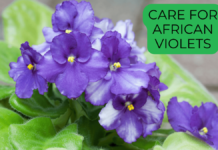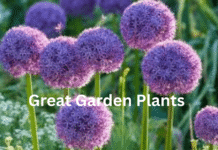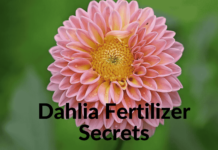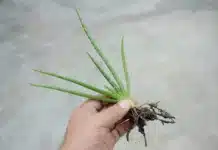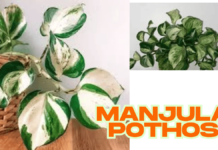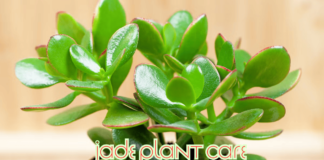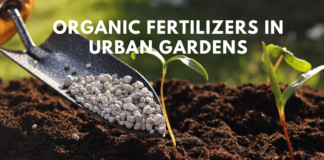Introduction
Elephant ear plants are an exotic and visually striking addition to any garden or home. Known for their large, heart-shaped leaves, they are often favored by gardeners and plant enthusiasts for their impressive appearance. However, proper care is essential to ensure these plants remain healthy and vibrant. If you’ve ever wondered how to care for elephant ear plants, this guide will walk you through everything you need to know, from ideal growing conditions to maintenance tips. Whether you’re growing them indoors or outdoors, understanding the right approach to watering, sunlight, and soil is key to achieving success.
In this article, we will explore elephant ear plant care, providing insights on how to care for elephant ear plants in various environments. Whether you are a seasoned gardener or a beginner, this guide will offer actionable tips that will help your plant flourish.
Understanding Elephant Ear Plants
Before diving into the care specifics, it’s essential to understand what makes elephant ear plants so unique. These plants are part of the Araceae family, with a variety of species, including Colocasia and Alocasia. Both species are known for their lush, large leaves that can grow up to three feet long. Their bold and dramatic appearance makes them ideal for adding an exotic flair to any landscape.
While elephant ear plants are generally easy to grow, they do require specific care to ensure they thrive. These plants typically prefer a warm climate, abundant water, and nutrient-rich soil. Now, let’s explore how to properly care for your elephant ear plant to help it grow strong and healthy.
1. Choosing the Right Location
One of the first and most crucial steps in caring for an elephant ear plant is choosing the right location. Elephant ear plants thrive in areas that receive indirect sunlight. Direct sunlight can scorch their large leaves, leading to brown spots or damaged foliage. If you are growing them indoors, place them near a window with bright, filtered light, but avoid direct exposure to the sun.
For outdoor elephant ear plants, select a spot that is partly shaded. This will protect the plant from intense midday heat while still providing the light it needs for optimal growth.
2. Watering Your Elephant Ear Plant

Watering is a critical component of elephant ear plant care. These plants prefer consistently moist soil but are sensitive to both drought and waterlogging. You should water your elephant ear plant regularly, ensuring the soil remains damp but not soggy. A good rule of thumb is to water deeply whenever the top inch of soil feels dry to the touch.
However, it’s essential to avoid water pooling around the roots, as this can lead to root rot. Using a well-draining pot or ensuring good drainage in the garden will prevent water from accumulating at the bottom. In hotter climates, elephant ear plants may require more frequent watering to prevent drying out.
3. Soil and Fertilization

The soil quality plays an integral role in the health of your elephant ear plant. These plants thrive in rich, well-draining soil that retains moisture without becoming waterlogged. A mix of peat moss, compost, and perlite can offer the perfect balance of nutrients and drainage.
Fertilization is another key element in how to care for an elephant ear plant. During the growing season (spring and summer), feed your plant with a balanced, water-soluble fertilizer every two weeks. This provides the necessary nutrients to support strong leaf growth and vibrant foliage. During the fall and winter months, reduce the frequency of fertilization as the plant’s growth slows down.
4. Temperature and Humidity

Elephant ear plants are tropical plants, meaning they prefer warm, humid environments. To ensure healthy growth, aim to maintain temperatures between 65°F and 75°F (18°C – 24°C). If the temperature drops below 50°F (10°C), your plant may suffer from cold stress and could die.
Humidity is another factor to consider when caring for an elephant ear plant. These plants thrive in environments with high humidity. If you’re growing your plant indoors, consider using a humidifier or placing the pot on a tray filled with pebbles and water to help increase humidity. Regular misting can also help, especially in dry climates.
5. Pruning and Maintenance Pruning is an essential part of maintaining the health and appearance of your elephant ear plant. As the plant grows, it may produce dead or yellowing leaves. Regularly remove these leaves to improve air circulation and keep the plant looking tidy. Additionally, if the plant starts to outgrow its space, you can trim back the longer stems to encourage more compact growth.
Be sure to use clean, sharp pruning shears to avoid damaging the plant. After pruning, clean the shears with rubbing alcohol to prevent the spread of diseases.
6. Dealing with Pests and Diseases
Like any plant, elephant ear plants are susceptible to pests and diseases. Common issues include aphids, spider mites, and slugs. These pests can damage the leaves and stunt the plant’s growth. If you notice any pests, treat your plant promptly with an organic insecticide or by spraying it with a mixture of water and dish soap.
Root rot is another common issue, especially when the plant is overwatered or the soil doesn’t drain well. To prevent root rot, always ensure the plant is in a well-draining pot and avoid overwatering.
7. Winter Care for Elephant Ear Plants
Elephant ear plants are sensitive to frost, so in colder climates, it’s important to bring them indoors before the first frost. If you have elephant ear plants in the ground, dig up the bulbs and store them in a cool, dry place over the winter. You can replant them in the spring when the temperature warms up.
For indoor plants, reduce watering during the winter months and place the plant in a cooler room. Make sure it still receives adequate light and humidity to survive until spring.
Pros and Cons of Elephant Ear Plant Care
| Pros | Cons |
|---|---|
| Large, attractive foliage that adds drama to any space | Requires high humidity, which may be challenging in dry environments |
| Low-maintenance once established | Sensitive to frost, making it unsuitable for cold climates without extra care |
| Can be grown indoors or outdoors | Prone to pest infestations, which require vigilant care |
| Grows quickly, providing instant impact in the garden | May need regular pruning to maintain an appealing appearance |
FAQs About Elephant Ear Plant Care
Q: How often should I water my elephant ear plant?
A: Water your elephant ear plant whenever the top inch of the soil feels dry. Ensure the soil stays consistently moist but not soggy.
Q: Can I grow an elephant ear plant indoors?
A: Yes, elephant ear plants can be grown indoors, provided they receive indirect sunlight and are placed in a humid environment.
Q: Why are the leaves on my elephant ear plant turning yellow?
A: Yellowing leaves could be a sign of overwatering, nutrient deficiencies, or a pest issue. Ensure proper watering practices and check for pests.
Q: Do elephant ear plants need direct sunlight?
A: No, elephant ear plants prefer bright, indirect sunlight. Direct sun can scorch their leaves.
Q: Can I grow elephant ear plants in cold climates?
A: Elephant ear plants are not frost-tolerant. In colder climates, you will need to bring them indoors during the winter or store their bulbs.
Conclusion
Caring for an elephant ear plant is a rewarding experience, as these striking plants bring beauty and drama to any setting. With the right care, including proper watering, sunlight, and humidity, your elephant ear plant can thrive and grow into a stunning specimen. Regular maintenance, such as pruning and pest control, will ensure it remains healthy throughout the year.
Whether you’re looking to add a tropical flair to your home or garden, knowing how to care for an elephant ear plant can help you achieve a lush, vibrant display. With the tips shared in this guide, you’ll be equipped to give your plant the best care possible, ensuring it remains a standout in your plant collection for years to come.



